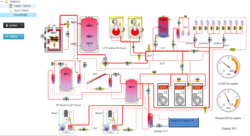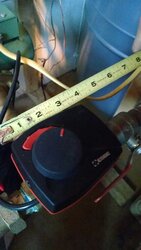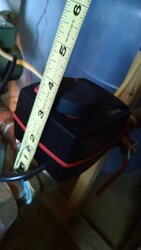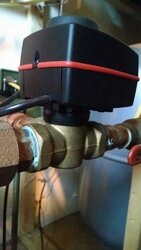I'm not sure if this topic has been beaten to death yet or not. I am still really new here but am very impressed with some of the knowledge, engineering and equipment out there. I'm happy to see the amount of info around Thermal Storage design and piping but I haven't seen anything about leveraging a mixing valve to get better "mileage" out of the storage. I have attached a few pictures, as a long time Hearth Member educated me that seeing goes a long way. One photo is of my Shunt Valve Controller (everything is in Celsius). This system is controlled by an Outdoor Reset (see Heat Curve Photo) but has the ability to be overridden by an Indoor Sensor should the Temp vary too far from target either way.
I have the Indoor Sensor upstairs as upstairs is 1 big heating loop. The Heat Curve I have chosen to use gets me to about 70F Upstairs and with the help of thermostats keeps my downstairs (2 loops) at 72F.
My boiler controls this stuff but I understand that there are controllers that can do this as long as you have storage. I have been asked about my emitters so I have included a photo of these as well. They are standard baseboard with some aftermarket covers for looks. My plumbers swears I am losing 30-40% of BTU power due to these covers. I also have a Modine Hydronic Heater heating an unfinished basement.
I have chosen a Heat Curve of 52. If you look at the heat Curve graph and look at the curve that intersects 50C and -15C, just shift it up 2 degrees and that is what I am tracking.
To tie this info to something, I am heating about 5000 sqft (includes a 1500 sqft basement at 67F & a 500 sqft addition with an UNDER powered toe heater) and keep the house at 70 -72 as described. Looking at the Shunt Control you see that the Outdoor temp is 1C (34F) and that my target flow temp is 40C (104F); at the moment of the photo actual is 37C (99F). The whole day was about 34F with no sun. I started a fire this AM around 7:00 AM (65kw = 200k btu hr) and got the top tank to 190F. It is now a little after 6:00 PM and top tank is at 181F.
This is VERY different from last year where I felt I was always pressing to charge tanks. I'm curious as to others experiences.
I have the Indoor Sensor upstairs as upstairs is 1 big heating loop. The Heat Curve I have chosen to use gets me to about 70F Upstairs and with the help of thermostats keeps my downstairs (2 loops) at 72F.
My boiler controls this stuff but I understand that there are controllers that can do this as long as you have storage. I have been asked about my emitters so I have included a photo of these as well. They are standard baseboard with some aftermarket covers for looks. My plumbers swears I am losing 30-40% of BTU power due to these covers. I also have a Modine Hydronic Heater heating an unfinished basement.
I have chosen a Heat Curve of 52. If you look at the heat Curve graph and look at the curve that intersects 50C and -15C, just shift it up 2 degrees and that is what I am tracking.
To tie this info to something, I am heating about 5000 sqft (includes a 1500 sqft basement at 67F & a 500 sqft addition with an UNDER powered toe heater) and keep the house at 70 -72 as described. Looking at the Shunt Control you see that the Outdoor temp is 1C (34F) and that my target flow temp is 40C (104F); at the moment of the photo actual is 37C (99F). The whole day was about 34F with no sun. I started a fire this AM around 7:00 AM (65kw = 200k btu hr) and got the top tank to 190F. It is now a little after 6:00 PM and top tank is at 181F.
This is VERY different from last year where I felt I was always pressing to charge tanks. I'm curious as to others experiences.


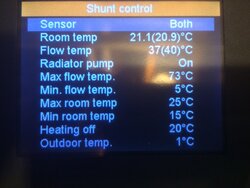
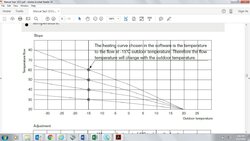
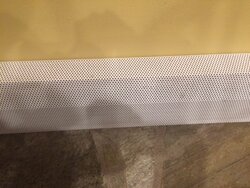
 ). I look forward t learning what you decide to do and hearing your results.
). I look forward t learning what you decide to do and hearing your results.